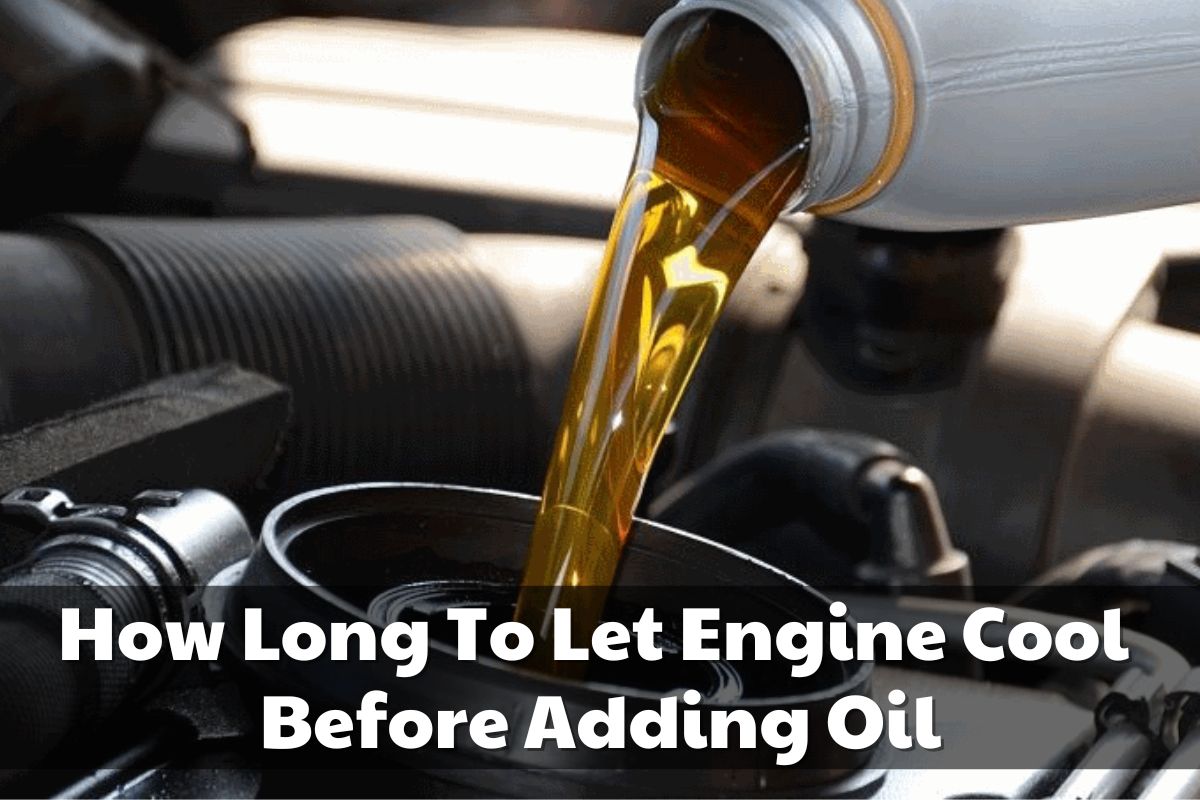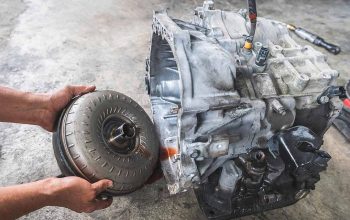Let the engine cool for at least 10 minutes before adding oil. It is important to allow the engine to cool down for a sufficient amount of time before adding oil.
This ensures that the oil will not be too hot and cause potential damage to the engine or your safety. Cooling the engine for at least 10 minutes allows the oil to settle and provides an accurate reading on the dipstick when checking the oil level.
It is essential to follow this practice to maintain the engine’s performance and longevity. By allowing the engine to cool properly, you can ensure that the oil is added at the optimal temperature for optimal lubrication and protection.
The Importance Of Cooling The Engine Before Adding Oil
The importance of cooling the engine before adding oil cannot be overstated. This simple step not only helps prevent burns and injuries, but it also allows the oil to drain effectively, ensuring optimum performance and longevity of the engine.
By giving the engine sufficient time to cool down, you minimize the risk of coming into contact with hot surfaces that can cause serious burns. Additionally, hot oil can splatter and lead to injuries. It is crucial to prioritize safety and take the necessary precautions to avoid any mishaps or accidents.
Furthermore, allowing the engine to cool before adding oil ensures that oil drains properly. When the engine is hot, oil can cling to internal components, making it difficult to drain completely. This can lead to inadequate lubrication and potentially harmful buildup of contaminants in the engine.
To summarize, taking the time to cool the engine before adding oil is essential for both safety and optimal engine performance. Remember to prioritize safety and follow manufacturer guidelines to ensure the longevity and reliability of your engine.
Factors Affecting Cooling Time
Bearing in mind the importance of engine maintenance, it is crucial to understand the factors that influence the cooling time before adding oil. Engine temperature, ambient temperature, and duration of engine operation all play significant roles in determining the ideal waiting period.
The engine temperature is a vital consideration as it directly affects the cooling time. A hotter engine requires a longer cooling period before oil can be safely added.
Ambient temperature is another important factor. In warmer climates, it may take a relatively shorter time for the engine to cool down, whereas cooler temperatures require more time for adequate cooling.
Furthermore, the duration of engine operation must be considered. An engine that has been running for an extended period of time would typically need a longer cooling time compared to a recently operated engine.
Therefore, it is crucial to factor in the engine temperature, ambient temperature, and duration of engine operation to ensure sufficient cooling time before adding oil.
General Guidelines For Cooling Time
Understanding your engine type is crucial when determining how long to let your engine cool before adding oil. Different engine types have different cooling requirements, so it’s essential to follow the manufacturer’s recommendations. For air-cooled engines, it’s generally recommended to wait at least 15 minutes before adding oil to ensure the engine has reached a safe temperature. Liquid-cooled engines typically require a longer cooling time, around 30 minutes, to allow the coolant to cool down. Additionally, it’s important to note that the outside temperature can also affect the cooling time, so it’s wise to wait a bit longer during hot weather conditions. Following these guidelines will help ensure that your engine is adequately cooled and ready for an oil change.
Cooling Time For Different Engine Types
Air-cooled engines generally require less cooling time compared to liquid-cooled engines. After turning off the engine, it is recommended to wait for around 5 to 10 minutes for the engine to cool down before adding oil. This short waiting period allows the hot engine parts to gradually cool down to a safe temperature, preventing any potential damage to the engine or injury during the oil change process.
Liquid-cooled engines, on the other hand, tend to retain heat for a longer duration due to the presence of a cooling system. To ensure proper cooling, it is advisable to wait for at least 15 to 20 minutes before adding oil to a liquid-cooled engine. This extended waiting period allows the engine coolant to effectively dissipate the heat, bringing the engine temperature down to a suitable level for adding oil.
Cooling Time Considerations
When it comes to adding oil to your engine, it is important to consider the cooling time before doing so. The cooling time depends on various factors, including environmental conditions and engine workload.
Environmental conditions play a significant role in determining the cooling time. If you are in a hot climate or have been driving in traffic, it may take longer for the engine to cool down. Similarly, if you have been driving in cold weather, the engine may cool down more quickly.
Engine workload is another factor to consider. If you have been driving at high speeds or towing heavy loads, the engine will be hotter and may require more time to cool down.
It is important to let the engine cool down sufficiently before adding oil to avoid any potential damage or safety risks. Be sure to consult your vehicle’s manual for specific guidelines on the recommended cooling time for your engine.
Challenges Faced With Adding Oil To A Hot Engine
Adding oil to a hot engine poses several challenges. One of the main concerns is the breakdown and degradation of the oil itself. When the engine is hot, the oil becomes thin and loses its viscosity, leading to reduced lubrication efficiency. This can result in increased friction and wear on engine components. Additionally, a hot engine tends to consume oil at a faster rate, as the higher temperatures cause the oil to evaporate more quickly. This can lead to a decrease in oil levels and potentially cause damage to the engine if not addressed promptly. To avoid these issues, it is recommended to let the engine cool down before adding oil, allowing the oil to regain its proper viscosity and ensuring effective lubrication. Taking this precaution can help maintain the engine’s performance and prolong its lifespan.
Consequences Of Ignoring Cooling Time
Inadequate cooling time can lead to severe consequences for your engine. Ignoring the recommended cooling time before adding oil can result in significant engine damage, negatively impacting both the performance and fuel efficiency of your vehicle.
Failure to allow the engine to cool properly can cause the oil to become excessively hot, which in turn can lead to oil degradation and reduced lubrication. Insufficient lubrication can result in increased friction and wear on vital engine components, such as pistons, cylinders, and bearings.
Over time, this can lead to decreased engine performance, including reduced power output and acceleration. Additionally, the engine may begin to consume more oil, further contributing to poor fuel efficiency. The increased friction and heat can also result in increased fuel consumption, as the engine has to work harder to overcome the added resistance.
It’s important to follow the manufacturer’s guidelines for cooling time before adding oil to ensure optimal engine performance and longevity. Take the time to let your engine cool properly, and you’ll avoid the costly consequences of neglecting this crucial maintenance step.
Tips For Handling Engine Oil Changes
When it comes to engine oil changes, safety precautions are essential to avoid any accidents or injuries. Before adding oil to the engine, it is important to let it cool down. This allows the oil to settle and prevents any potential burns from hot oil splashing out. Additionally, a cool engine ensures that the oil is at the correct temperature for accurate measurement.
Best practices for oil change procedures include wearing protective gloves and goggles to protect yourself from any potential splashes. It is also advisable to park the vehicle on a level ground and engage the parking brake to prevent any movement during the oil change.
Before removing the oil cap, it is recommended to clean any debris or dirt around it to prevent them from falling into the engine. Using a funnel will help with a clean and precise oil pouring process. Remember to use the correct oil recommended by the vehicle manufacturer and never overfill the engine.
By following these safety precautions and best practices, you can ensure a smooth and safe oil change process for your engine.

Credit: bradscartunes.com
Frequently Asked Questions On How Long To Let Engine Cool Before Adding Oil
Should You Wait For Engine To Cool Before Adding Oil?
No, you don’t have to wait for the engine to cool before adding oil. You can add oil anytime, as long as the engine is off.
Is It Okay To Add Oil When Engine Is Hot?
Adding oil to a hot engine is not recommended. The engine should be cool to avoid burns or injuries, and to get an accurate oil level reading. It is best to wait for the engine to cool down before adding oil.
How Long Should I Wait For My Car To Cool Down Before Checking The Oil?
Wait for your car to cool down for at least 5 to 10 minutes before checking the oil. It’s important to let the engine temperature drop to avoid burns and to get an accurate oil level reading. Cool down time may vary depending on your vehicle.
How Long After Putting Oil In Car Can You Drive?
After putting oil in your car, you can drive it right away. Just make sure you give the engine a few minutes to warm up before hitting the road. This allows the oil to circulate and lubricate all the necessary parts, ensuring smooth operation.
Conclusion
To ensure proper engine performance and longevity, it is crucial to allow sufficient cooling time before adding oil. Rushing this process can lead to ineffective lubrication and potential damage to engine components. By patiently allowing the engine to cool down, you can guarantee that the oil will effectively lubricate and protect the internal parts.
So remember, prioritizing adequate engine cooling time before oil refilling is an essential practice for maintaining a healthy engine.



